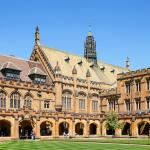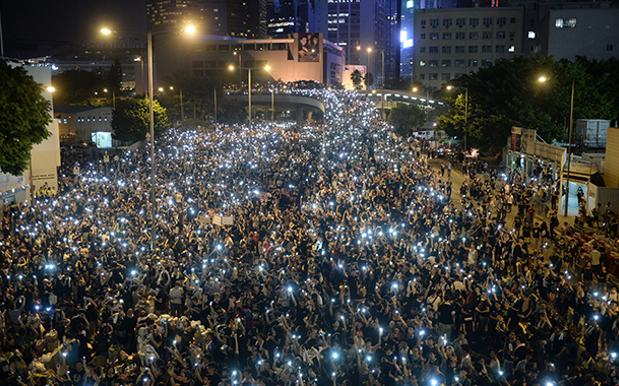
Shit is getting pretty real in a big hurry in Hong Kong. You may (or may not) have read about the civil unrest that’s been brewing since this past Friday, with the number of protesters joining the masses seemingly growing at an exponential rate. But, like a lot of things, distance makes it a little tricky to fully grasp exactly what’s going on, why people are protesting, and what’s caused this mess. Hopefully we, through this article, can help you understand the key issues at stake, and why people on this tiny, densely populated little space of land, are so angry right now.
Alright, give me the hot scoop. What’s going on in Hong Kong?
Since Friday, huge crowds of protesters have been gathering in non-violent manners in front of Government offices through downtown Hong Kong in an attempt to shut down – or at least hinder business – in one of Asia’s most important financial centres.
Righto. Who is doing this exactly?
That’s a little trickier to answer. Initially the protests were sparked by a group calling themselves Occupy Central with Love and Peace. Soon after the protests began – which were scheduled to begin this Wednesday initially, but were brought forward by nearly a week – the initial group began coordinating with student groups to attract more numbers. However over the course of the weekend the movement appears to have become somewhat decentralised or decompartmentalised, and now people from all walks of Hong Kong life have been joining in.
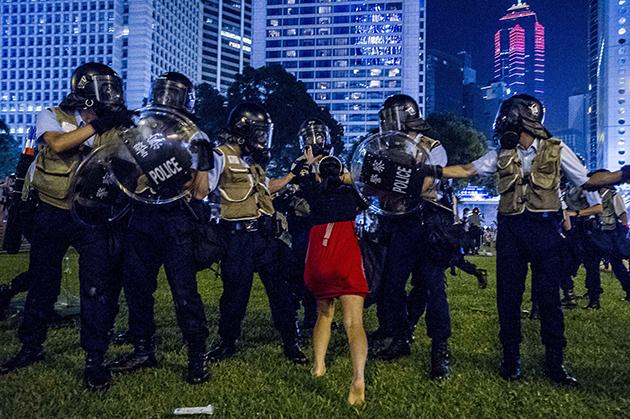
Seems fair and reasonable. Now the big question – why are they protesting?
This whole affair actually had its base roots set back in 1842.
Uh… I think you made a typo there. You mean like… 1942, right?
Nope. 1842. As in the year Eighteen Forty-Two. Over 170 years ago. That was the year that the British Empire first took over Hong Kong and its surrounding land, and began an ownership of the colony that lasted some 150 years until 1997.
Hooley dooley. What happened in 1997?
Thanks to the 1984 agreement between Britain and China, on July 1st 1997, control of Hong Kong was handed back to China, wherein its full legal provincial name became Hong Kong Special Administrative Region of the People’s Republic of China.
That’s quite the mouthful.
You’re darn tootin’. But here’s where things start getting a little bit tricky. When you exist under British rule for 150 years – particularly when that period of 150 years sees the greatest advancement of technology and society ever seen in human history – certain things and systems become engrained in the fabric of your society. British rule isn’t exactly totalitarian, so certain liberties and civil freedoms became the norm within Hong Kong – things like Freedom of Speech, Freedom of the Press, Freedom of Assembly and Freedom of Religion were all part of Hong Kong’s British way of life. Unfortunately, they’re not values that are 100% shared by the Communist State that is China. So as per the handover agreement, Hong Kong developed a thing called the Basic Law which preserves citizens rights to these things until at least 2047 – think of it as kind of a mini-Constitution. The societal system is referred to as a “One Country, Two Systems” regime; in terms of sovereignty, they are China, but their societal construction remains uniquely British-influenced Hong Kong.
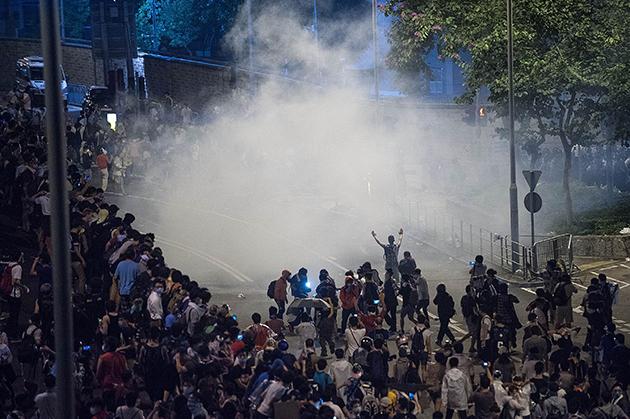
Ok. That seems simple enough I guess. So where’s the problem coming from?
The problems arising here are two pronged. Firstly, China has been leaning particularly heavily on the “One Country” side of the ledger lately. Troops from the People’s Liberation Army – i.e. The Chinese State Armed Forces – are stationed in former British military buildings.
The other problem lies in the fact that Hong Kong’s Basic Law allows it to look, smell, and feel like a democracy but without actually being one. And that road block is starting to really grind people’s gears.
Wait, so… They’re NOT a democratic land?
Nope. And they never really have been. During British rule colonial Governors were the provinces leaders, and they were chosen and appointed by London. Since the handover to China, a Chief Executive of Hong Kong has been appointed as their representative in Beijing. The problem with this system is that the Executive is appointed via an election.
That… That doesn’t seem so bad, does it?
It doesn’t until you learn that the election is only carried out by a special “Election Committee” which is a group of people of only about 1200, and the vast, vast majority of those people are Chinese loyalists appointed from Beijing. So the Chief Executive has always been Beijing-approved. This pisses off pro-democracy types in Hong Kong, unsurprisingly. But China, being a giving sort, proposed a new system after the People’s Congress ruled in 2007 that Hong Kong’s leader should be elected by the people – a writ of universal sufferage; one person, one vote.
While the model that Beijing approved and proposed – that would take effect from the 2017 election – did involve Hong Kong people electing their Chief Executive directly, the nomination process requires something called a “broadly representative nominating committee.” So the process for nomination remains entrenched in the same Beijing-backed roots: Three nominees are selected, but can only gain nomination by obtaining a majority vote from the Election Committee. So while Hong Kong people will finally get their say, they’ll still only be able to choose between one of three heavily Beijing-approved candidates.
Hong Kong’s pro-democracy movement? They are not taking this very well.
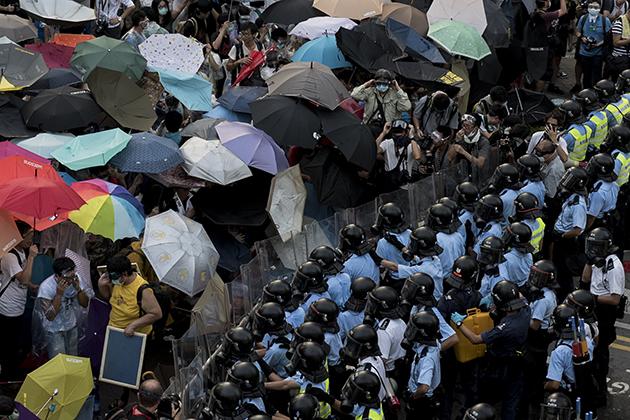
Bloody hell. That’s a bit rough. So what happened last Friday?
The Occupy Central movement has been calling for the current Chief Executive of Hong Kong, Lueng Chun-Ying, to resign, and for Beijing to allow the Hong Kong people to freely and independently nominate and elect their own leader. China’s President Xi Jinping was not having a bar of that whatsoever, so – using peaceful methods of civil disobedience championed by the likes of Henry David Thoreau and Dr. Martin Luther King, Jr. – the followed through on the threats they’ve been levelling at the Chinese government and began staging the non-violent protests that have evolved to the point you’re seeing today.
Right on!
Right?! It’s so darn elegant. Here we just gather in crowds and throw shit. But they’ve got thought, reason and a sound philosophical ethos behind it. It’s beautiful, damn it.
How have the Chinese reacted?
About as well as you would expect. Riot police have been lobbing tear gas canisters at crowds, attempting to get them to disperse. Protesters have been protecting themselves with surgical masks, glad-wrapping their eyes, and using umbrellas as shields – some are starting to call this the Umbrella Revolution in response.
But this whole business puts them in a rather tricky position. The Chinese Government is always fearful that protest begets protest – that one uprising of people in one part of their country will spark similar uprisings in other parts. And, perhaps more importantly, Hong Kong is a global financial mega-power. The whole point of China taking back Hong Kong was to showcase to the world their ability to manage a global economic force with limited intervention. And the protests are already having an effect on global markets, with US stock exchanges down as a direct result.
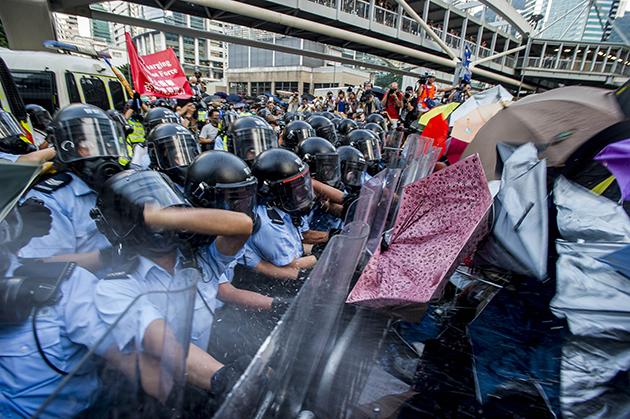
So, what are they going to do?
Who would know, at this point. Seemingly they’ve got two options, and neither them are good results for the Communist Government and Xi Jinping. The choices are either back down from previously made rulings and either renegotiate with the Hong Kong people, or simply allow them the democratic election process they want. This choice makes the Chinese President appear weak, which is a disastrous outcome for the leader of a Communist State.
The other option is to disperse the protesters with force, by either deploying Hong Kong’s elite anti-riot police, or by sending in troops from the People’s Liberation Army. If this option is used and goes badly, the global media and the faux-independent nature of Hong Kong means the world could potentially watch as the Chinese Government inflicts another bloody Tiananmen Square incident on its own people – this time with much, much fewer places to hide than in 1989.
The Chinese Government will be beyond reluctant to negotiate, but the growing crowds in Hong Kong are refusing to budge.
For now, or at least for the next little while, this extraordinarily tense stand-off remains balanced – albeit precariously – on a knife’s edge.
Photos: Dale De La Rey, Xaume Olleros, Anthony Kwan, and Alex Ogle via Getty Images.


